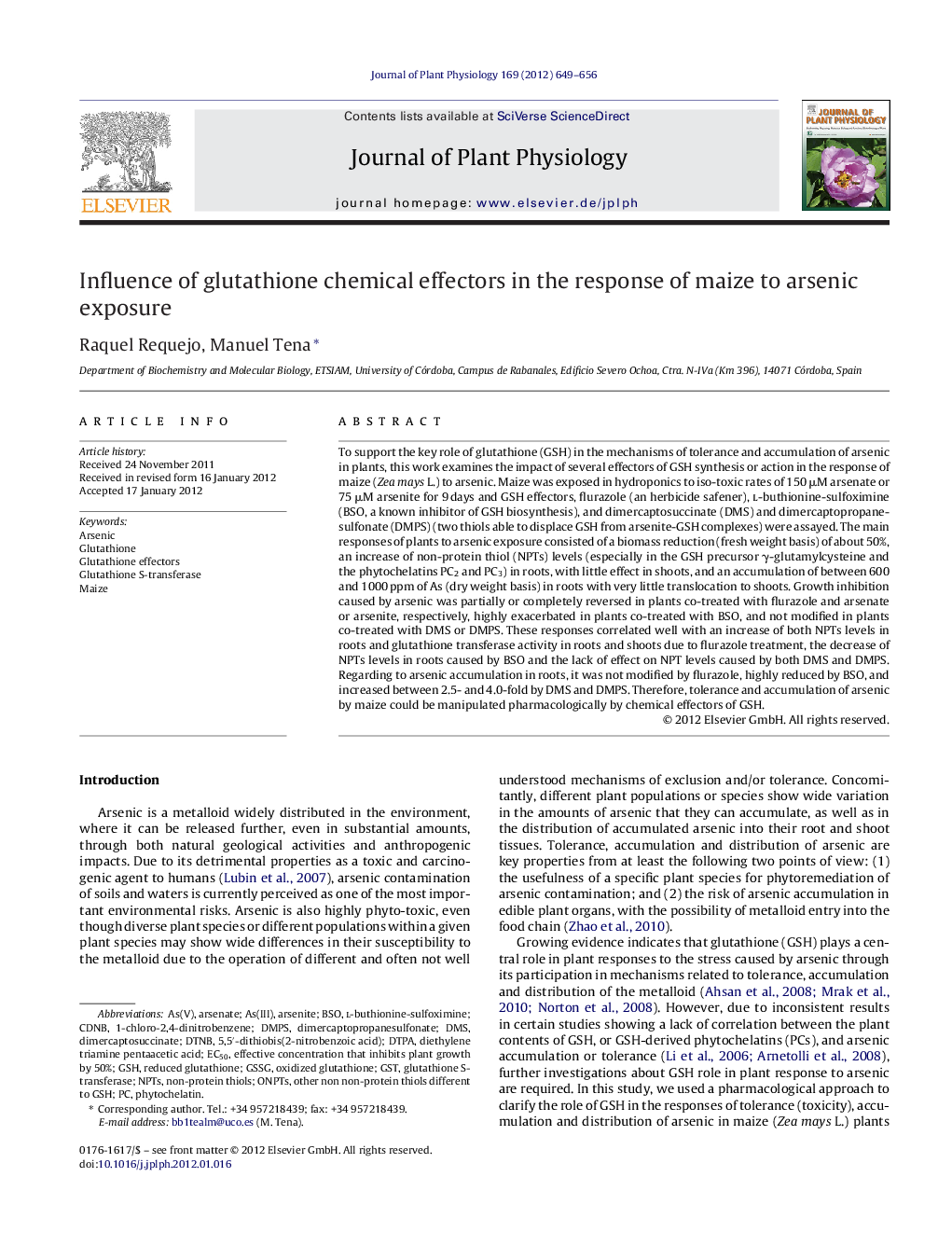| کد مقاله | کد نشریه | سال انتشار | مقاله انگلیسی | نسخه تمام متن |
|---|---|---|---|---|
| 2056371 | 1075819 | 2012 | 8 صفحه PDF | دانلود رایگان |

To support the key role of glutathione (GSH) in the mechanisms of tolerance and accumulation of arsenic in plants, this work examines the impact of several effectors of GSH synthesis or action in the response of maize (Zea mays L.) to arsenic. Maize was exposed in hydroponics to iso-toxic rates of 150 μM arsenate or 75 μM arsenite for 9 days and GSH effectors, flurazole (an herbicide safener), l-buthionine-sulfoximine (BSO, a known inhibitor of GSH biosynthesis), and dimercaptosuccinate (DMS) and dimercaptopropanesulfonate (DMPS) (two thiols able to displace GSH from arsenite-GSH complexes) were assayed. The main responses of plants to arsenic exposure consisted of a biomass reduction (fresh weight basis) of about 50%, an increase of non-protein thiol (NPTs) levels (especially in the GSH precursor γ-glutamylcysteine and the phytochelatins PC2 and PC3) in roots, with little effect in shoots, and an accumulation of between 600 and 1000 ppm of As (dry weight basis) in roots with very little translocation to shoots. Growth inhibition caused by arsenic was partially or completely reversed in plants co-treated with flurazole and arsenate or arsenite, respectively, highly exacerbated in plants co-treated with BSO, and not modified in plants co-treated with DMS or DMPS. These responses correlated well with an increase of both NPTs levels in roots and glutathione transferase activity in roots and shoots due to flurazole treatment, the decrease of NPTs levels in roots caused by BSO and the lack of effect on NPT levels caused by both DMS and DMPS. Regarding to arsenic accumulation in roots, it was not modified by flurazole, highly reduced by BSO, and increased between 2.5- and 4.0-fold by DMS and DMPS. Therefore, tolerance and accumulation of arsenic by maize could be manipulated pharmacologically by chemical effectors of GSH.
Journal: Journal of Plant Physiology - Volume 169, Issue 7, 1 May 2012, Pages 649–656